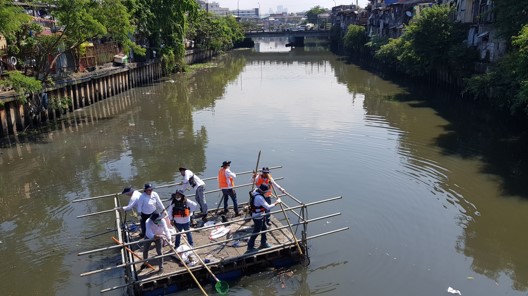
 With its program Live for the Rivers Movement Coalition, the Light Rail Manila Corp. (LRMC) stepped up its commitment by providing livelihood to urban poor communities with the production of vetiver grass and Mabuhay balls and engaging over 800 volunteers to clean up and restore life in Metro Manila’s longest creek, the Estero de Tripa de Gallina (ETG).
With its program Live for the Rivers Movement Coalition, the Light Rail Manila Corp. (LRMC) stepped up its commitment by providing livelihood to urban poor communities with the production of vetiver grass and Mabuhay balls and engaging over 800 volunteers to clean up and restore life in Metro Manila’s longest creek, the Estero de Tripa de Gallina (ETG).
The Live for the Rivers Movement Coalition was launched in 2016 to address the river pollution along the estero. “The Estero de Tripa de Gallina can no longer sustain life,” said LRMC President and CEO Rogelio Singson. “Worse, it flows out to Manila Bay through Pasig River, thereby, contaminating the two large bodies of water that provide food for the population.”
The Coalition includes Pasay City Environment and Natural Resources Office, Department of Environment and Natural Resources, Metropolitan Manila Development Authority, Department of Public Works and Highways, Department of Interior and Local Government, Department of Science and Technology, the Department of Health, the Philippine Coast Guard, and the ABS-CBN Foundation.
On Sept. 16, 2017, 546 volunteers, on foot and on boats, hauled a total of 4,172 kilogram of non-biodegradable wastes, installed 16 Vetiver grass pontoons and dropped 220 Mabuhay balls into the creek. Vetiver grass is used worldwide to treat effluents in wastewater. “Over the next few months we are going to float more vetiver pontoons which will be maintained by the communities and from which they can derive livelihood from its applications in handicrafts and in preventing soil erosion,” said Mr. Singson.
The Mabuhay ball is a tennis ball-sized agent made of beneficial microorganisms that can break down the toxins and food waste in 1000 liters of polluted water. In addition to the livelihood training and cleanup of the ETG, over 200 volunteers traveled from Pasay City to plant about 2,000 propagules in one day at the Lagadlarin Mangrove Forest in Lobo, Batangas.